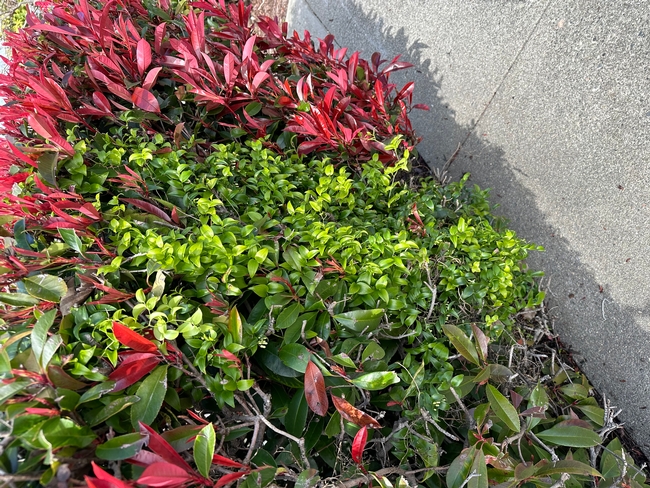Asparagus asparagoides
As I dashed outside between rain showers to pull a few weeds, I noticed a small weed that pops up in the same spot year-after-year, no matter how often I pull it up. I didn't think too much about it until I noticed that aneighbor'sphotinia hedge is absolutely thick with the weed. It turns out that I'm very lucky that the weed in my yard hasn't similarly spread.
Asparagus asparagoides is known by many names, including bridal creeper, bridal veil, smilax, and smilax asparagus. This invasive weed is the same plant used in floral arrangements (and yes, bridal bouquets). Outside of the florist's shop, however it is a tenacious weed.
Asparagus asparagoides is an herbaceous vine in the Liliaceae family. It grows to 20 feet or more on wiry stems and has 1-inch, pointed, glossy green leaves. In the spring, it produces fragrant white flowers followed by berries. Birds eat the berries, thus spreading the plant.
Like most weeds, Asparagus asparagoides is very good at what it does. It smothers and competes with other plants, spreads easily by birds, and is very hard to destroy. A winner in the weed world! According to Calflora.org, the plant can form dense, tangled mats that die back in the summer and create a fire hazard. It also forms a dense tuberous mat underground that can prevent other plants from obtaining moisture and nutrients. At least 87 percent of the plant weight is below ground when it is actively growing. The Sunset Western Garden Book refers to the roots as “nearly immortal,” a disheartening description for any weed, because the roots can survive long drought periods.
An African native, A. asparagoides was transported internationally as an ornamental plant. In California, the plant is largely limited to central and southern coastal areas. Cal-IPC, which maintains the California Invasive Plant Inventory (a list of invasive plants based on ecological impacts) rates the plant as moderate. While the plant does not currently represent a widespread threat in California, there are concerns about increasing spread.
The UC Weed Research & Information Center offers information about non-chemical and chemical controls at https://wric.ucdavis.edu/information/natural%20areas/wr_A/Asparagus.pdf. Of note, chemical controls offer good control (of 80-95 percent), while non-chemical measures like digging or hand-pulling are less effective, but still offer fair control (50-80 percent). All rhizome fragments must be removed because dispersing the fragments will only spread the plant.
I don't know if the A. asparagoides is still used in floral displays, but if so, it is important to dispose of properly to make sure it doesn't spread. The plant material should not be incorporated into garden mulch material unless completely killed.
All of this made me wonder how I have managed to control my tiny plant, which is located by our front porch. I pull up the plant every time I see it, but I have never been able to dig down to its root and eradicate it because it is so close to the side of the porch. But I have a few theories. I suspect that our twenty-year-old house was built over the plant's root zone, which would have limited access to sun and moisture. The eaves overhead also limit these conditions on an ongoing basis, which might impede the plant's otherwise vigorous growth. I'll never know for sure, of course. After learning more about this plant, however, I'm heading straight outside to pull it up again and to try to dig it out– carefully so as not to spread any rhizomes.

photos by Erin Mahaney



